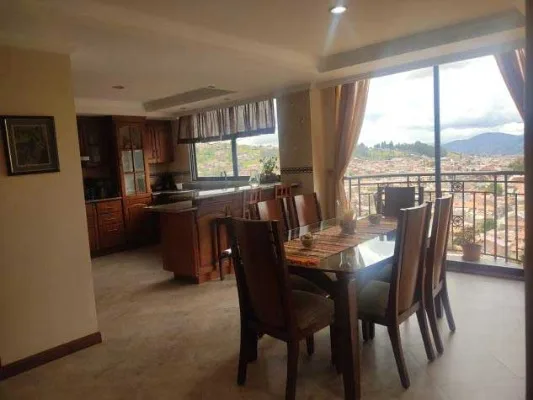Lifestyle and health: The saga of a research couple living in Cuenca
Editor’s note: This is the first of four articles that share the scientific discoveries of how changes in lifestyle can reverse coronary heart disease and prostate cancer. Heart disease and cancer are the major causes of mortality in Ecuador. The author is an organizer and participant in the upcoming First Latin American Congress on Lifestyle and Health (El Congreso Internacional Hábitos de Vida Saludable) to be held at the Mall del Rio Conference Center, November 11-13.
- Part 1: Lifestyle and health: The saga of a research couple living in Cuenca
- Part 2: The research saga of an expat couple living in Cuenca
- Part 3: Lifestyle and health: The saga of a research couple living in Cuenca
- Part 4: Lifestyle and health: The saga of a research couple living in Cuenca
By Larry Scherwitz, PhD
My wife Deborah Kesten, MPH and I moved to Cuenca in April 2015 armed with retirement visas and the intent to live here, make friends, learn Spanish, and explore South America.
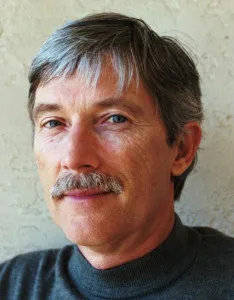
Larry Scherwitz, PhD
After 47 years of academic research career I wanted to live in a country that focused more on families and friendships; I wanted a place to develop the other side of my brain with the arts and photography. Deborah wanted a place where she could rest from writing books, enjoy new friends, and maybe share what she has learned with 25 years of study and writing on the cultural anthropology of food. Cuenca’s fresh and inexpensive fruits and vegetables were a big draw for us. In the states, Deborah and I were key team members in the series of clinical trials to evaluate the benefits of making comprehensive lifestyle changes for patients diagnosed with coronary heart disease, a disease that blocks the arteries that supply blood to the heart and cause heart attacks.
This series of articles is our personal story of discovery.

Deborah Kesten, MPH
So what are the lifestyle changes that can prevent and reverse chronic disease? They are a combination of the following: 1) a plant-based, no fat added whole food diet of fresh fruits, vegetables, whole grains, beans, legumes, nuts and seeds; 2) three hrs./wk. of combined aerobic and resistance exercise; 3) one-hour daily practice of stretching, deep relaxation, breathing techniques, meditation, and healing imagery); 4) social support delivered in a weekly one-hour session of program participants. Deborah and I were responsible for implementing and evaluating benefits of these lifestyle changes with heart patients in Germany and Holland and we inspired a team of cardiologists and researchers to replicate the findings in India.
In the first three articles, I will share details about our challenging and exciting research path of discovery. The fourth article will summarize our work as an international ambassador of the lifestyle approach as well as ask and answer the question, can comprehensive lifestyle change slow or reverse prostate cancer.
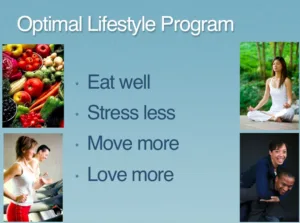 If you find this lifestyle approach of interest, we and our colleagues will be presenting this research and more in an international congress in Cuenca. Deborah and I are collaborating with Dra. Fernanda Sánchez, founder of the non-profit Cuenca Casa de la Diabetes to organize the content and speakers for El Congreso Internacional Hábitos de Vida Saludable. In English, we call it The First Latin American Congress on Lifestyle and Health, to be held at the Mall del Rio Conference Center, November 11-13, 2015.
If you find this lifestyle approach of interest, we and our colleagues will be presenting this research and more in an international congress in Cuenca. Deborah and I are collaborating with Dra. Fernanda Sánchez, founder of the non-profit Cuenca Casa de la Diabetes to organize the content and speakers for El Congreso Internacional Hábitos de Vida Saludable. In English, we call it The First Latin American Congress on Lifestyle and Health, to be held at the Mall del Rio Conference Center, November 11-13, 2015.
How Yoga Transformed My Career
The vedic sages of India designed yoga as a path for achieving personal transformation and ultimately self realization. For me, it was career transformation, and for those who participated in our research studies, a path to reversing chronic disease. My wife Deborah introduced me to hatha yoga in 1976 when I was an assistant professor at Baylor College of Medicine, in Houston, Texas. I had been running for aerobic exercise since junior high and began meditating in college, but yoga provided a whole new way to get flexible, strong, and focused and I loved it. Deborah remembers the crashing sounds of my failed attempts to do a headstand in our garage apartment.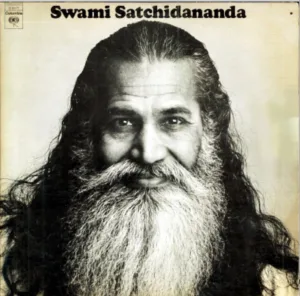
In my day job I was working at the National Heart Center as a behavioral scientist helping physicians communicate more effectively to get patients to take their medications for controlling their hypertension. Doing yoga in a medical school in the 1970’s was considered strange so I mentioned yoga practice only to a few medical students who repeatedly told me that I should meet a dropout medical student named Dean Ornish who was involved in yoga.
When I met Dean I found him to be the brightest, most energetic, and hard working person that I had ever met. Dean was not only practicing yoga, but he had Swami Satchidananda, a long-haired, bearded guru with sparkling eyes from India, telling him he should research the benefits of yoga for heart disease patients. When Dean was assisting surgeons, such as famed surgeon Michael DeBakey perform coronary artery bypass graft surgery, he saw patients coming in for repeated bypasses and he thought, there’s got to be a better way. Why not take Swamiji’s suggestion? He could see that drugs and surgery were not addressing the causes of the disease.
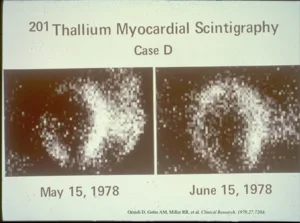 When I met Dean, he had been so passionate about treating heart patients with lifestyle changes that he had taken a year off from medical school. He had just finished a pilot study with nine heart patients who had adopted the lifestyle changes (mentioned above) for three weeks. I coached Dean in his writing of an abstract showing the results of his project. This is how we became acquainted and I have remained, for many years, his research mentor and later research director.
When I met Dean, he had been so passionate about treating heart patients with lifestyle changes that he had taken a year off from medical school. He had just finished a pilot study with nine heart patients who had adopted the lifestyle changes (mentioned above) for three weeks. I coached Dean in his writing of an abstract showing the results of his project. This is how we became acquainted and I have remained, for many years, his research mentor and later research director.
I was amazed that a medical student could conduct such an ambitious pilot study with limited resources, which he begged and borrowed from faculty at the medical school. Dean showed me the before-and-after Thallium scans of two patients who had participated in the program. I was intrigued by what I saw. There were what could be justified as evidence that the heart muscle was getting dramatically more blood flow with the yogic lifestyle!1 Although impressed, I told Dean that these results were preliminary and nobody would believe them.
Dean wrote the report on his findings even though he did not have a computer with a word processor. After work, I gave him access to the word processor in our department’s office and handed him a manual with instructions on how to use it, which he had never seen before. I thought he would be lucky if he didn’t get tired and just learn some basics of word processing before calling it a night. Instead Dean stayed up all night and completed the report! It was only one in a long series of seeming miracles that guided this work.
Even with a glimmer of hope that you could reverse heart disease, I knew no one would believe it. We asked, Can lifestyle change have a rapid and measurable impact on the way the heart functions?” This time Dean wanted to take the patients out into the country where they could not sneak pizzas from the hotel restaurant as some did in his pilot study.
The next article will show what country life and intensive practice of the yoga lifestyle can do for the heart.
____________
1. Ornish D, Gotto AM, Miller RR, et al. Clinical Research. 1979;27:720A








